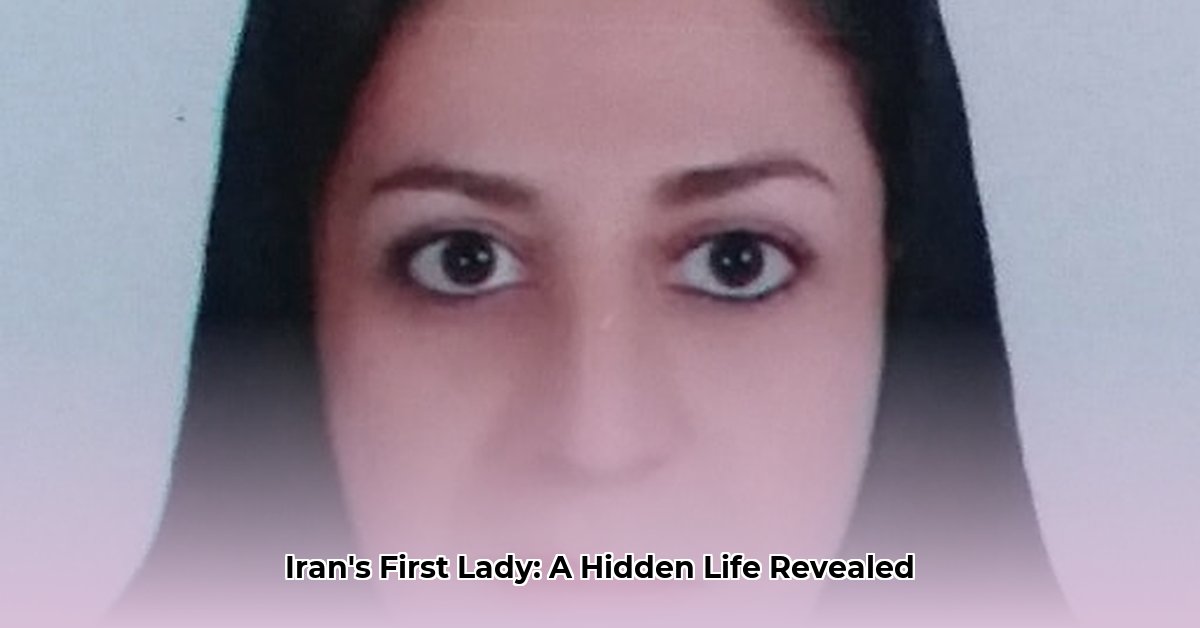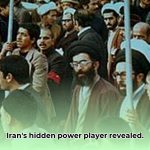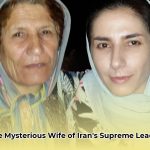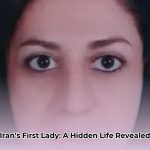Mansoureh Khojasteh Bagherzadeh remains an enigma, the wife of Iran’s Supreme Leader, Ali Khamenei. Information about her is scarce, seemingly by design. This essay embarks on a quest, assembling fragments of her life while acknowledging the unknown. We’ll examine available biographical details, reconcile conflicting accounts, and interpret the available data. The task is herculean, akin to solving a complex puzzle with a multitude of missing pieces. However, our endeavor is to construct a portrait, albeit incomplete, of this captivating and exceptionally private figure and the difficulties studying her. For more information, see this detailed biography.
What is Mansoureh Khojasteh Bagherzadeh Known For? Political Influence and Secrecy
Mansoureh Khojasteh Bagherzadeh, as the wife of Iran’s Supreme Leader, Ali Khamenei, occupies a position of considerable interest, yet the specifics of her life remain curiously obscure. What verifiable information exists about her? And what do we really know about her leadership position?
A Life Primarily Out of Public View
Some fundamental facts are corroborated. Born in Mashhad, Iran, likely around 1947, her 1965 marriage to Ali Khamenei is publicly documented, as are the details of their children. Beyond these bare details, information becomes scarce, seemingly intentionally so. This opacity is understandable, considering her husband’s considerable influence and power, and the family’s clear preference for privacy presents a noteworthy challenge to understanding her life.
Stories and Speculation: Filling the Emptiness
Even basic details, such as about her youth, are subject to varied interpretations. Some accounts suggest a traditional arranged marriage at a young age, whilst others portray her marriage within a religiously observant and conservative family. Available sources state that she was only 17 years old at the time of her marriage 1. Some claim that Ali’s mother came to Mansoureh’s house and asked her family to get her married. In publicly available resources, information regarding her education is largely non-existent. This lack of transparency extends to her financial life. Though the Supreme Leader’s assets are a matter of public record, directly attributing any specific wealth to Mansoureh herself defies accountability. Some estimate Ali Khamenei’s wealth to be around $95 billion, stemming from his control over Setad (The Execution of Imam Khomeini’s Order) 1.
The Difficulty of Examining a Private Life
Researching Mansoureh Khojasteh Bagherzadeh requires acknowledging significant limitations, particularly when attempting to analyze wealth accumulation and political influence. Iran’s information environment, which is tightly controlled, makes unbiased, independent examination very challenging. The government’s strategic release of information, exemplified by the seven chapters about her life during the Iranian Revolution published on Khamenei.ir, underscores this controlled narrative. This carefully managed information flow makes researching prominent figures within the Iranian political system exceptionally challenging. The information available to the public is often limited in context and carefully curated.
Fleeting Glimpses: Pieces of the Jigsaw Puzzle
A solitary known interview with her, conducted in Arabic, highlights the limited access to her perspectives and personal thoughts. Photographs are rare, highlighting her preference for a life out of the spotlight. Some reports indicate there are no photos of her available on social media 2. Her deliberate obscurity makes it exceedingly difficult to comprehend her personal beliefs, political leanings (if any), or any contributions beyond her role as a wife and mother. There are stories of her protecting rebellious pamphlets and books by hiding them when guards came to arrest Ali in the 1970s, showcasing potential support for his ideology 2.
Uncertainties and Interpretations: What We Can and Cannot Conclude
So, what defines Mansoureh Khojasteh Bagherzadeh? Ultimately, answering demands acknowledging significant unknowns. We know her position, family life, and clear inclination for privacy. The finer points – her personal beliefs, her political leanings and her individual impact – remain largely obscured. This absence of transparency isn’t merely a question of privacy; it exemplifies the challenges of understanding individuals within opaque political systems, where information undergoes careful management and independent authentication proves exceptionally difficult.
Perhaps future research, enriched by access to previously unavailable information, will illuminate her life more fully. Until then, the mystery remains. This mystery underscores the nature of power, influence, and control within Iran’s political landscape, where the informational scarcity itself speaks volumes, and the impact on her leadership potential becomes even more apparent.
The following table summarizes the known and unknown aspects of Mansoureh Khojasteh Bagherzadeh’s life, revealing the core insight of limited knowledge with strategic information management:
| Aspect | Known Information | Unknown Information |
|---|---|---|
| Birth | Mashhad, Iran; circa 1947 | Exact birth date, early life details |
| Marriage | Ali Khamenei; 1965 | Details of courtship, decision-making process |
| Education | Virtually unknown | Level of education, institutions attended, fields of study |
| Personal Wealth | Indirectly linked to her husband’s significant wealth | Specific assets, financial independence |
| Political Views | Largely unknown; likely aligned with her husband’s | Precise positions, influences |
| Public Appearances | Extremely rare | Nature of any engagement in public affairs |
| Personal Contributions | Largely unknown | Any significant activities outside of family life |
This incomplete picture reflects the complexities of researching prominent figures in secretive environments; it highlights both what we can know and, more significantly, the vast areas where our understanding remains limited.
How Iranian Figures Obscure Public Information: The Case Study of Mansoureh Khojasteh Bagherzadeh
Key Takeaways:
- Mansoureh Khojasteh Bagherzadeh’s life provides a unique perspective on the hindrances of researching prominent figures within opaque political systems which control the flow of information.
- Limited public information requires resourceful research strategies that emphasize archival delving and indirect sources to build a clearer picture.
- Ethical considerations, especially respecting privacy and avoiding biased speculation, are paramount when researching political figures and their families.
- Understanding the socio-cultural context of Iran is crucial when interpreting existing information and understanding why data is missing in the first place.
- Methodological transparency is key when reporting on such figures, openly acknowledging gaps and limitations to ensure you are seen as a trustworthy source of facts.
Her Complexity
Mansoureh Khojasteh Bagherzadeh, wife of Iran’s Supreme Leader, remains a subject of complexity. She meticulously maintains her privacy, making it difficult to verify details about her. How do we study such an elusive individual? How information is obscured becomes a challenge. Some reports indicate that in 2011, she was hospitalized and remained unrecognized until her husband visited her 2.
Navigating a Data Vacuum
The challenge is immediate: scant verifiable data exists, particularly regarding financial matters and policy influence. Public appearances are rare, media interviews are non-existent, and confirmed facts about her are minimal. This transparency deficit forces reliance on roundabout methods to get at the heart of what is really going on.
Strategies for Exploration
- Archival Diving: Explore Iranian historical archives, as both university libraries and private collections potentially holding relevant documents, letters, and photos. Requires significant work, while navigating linguistic barriers and bureaucratic hurdles.
- Networking: Reach out to experts familiar with Iranian politics and Iranian society. Academics, journalists, and connected individuals could have anecdotal information of value to your research.
- Contextual Analysis: When researching Iranian figures, understanding the socio-cultural context is crucial. Traditional values that emphasize family privacy limit public visibility of family members.
- Cross-Referencing: By cross-referencing any insignificant details, like a mention in an obscure article, with other information, you can fill in other areas of knowledge. This requires high focus, but is worth it.
- Open Source Intelligence (OSINT): Make use of OSINT techniques to gather information from various online sources. Remember to always critically verify information due to the potential for misinformation or propaganda.
Ethical Considerations
Limitations are not merely informational, but also ethical. Respecting Ms. Bagherzadeh’s privacy is essential. Avoid speculation and clearly distinguish between verifiable facts and educated guesses. Transparency regarding research limitations is essential to maintaining credibility.
The Broader Implications
The difficulties in researching Ms. Bagherzadeh’s life highlight a larger issue. The act of obscuring information impacts journalistic integrity and scholarly work. Opacity in leadership encourages mistrust and hinders a fully informed discussion surrounding Iranian rule.
Moving Forward
Responsible research on individuals, like Ms. Bagherzadeh, requires investigative work, ethical sensitivity, and proper cultural awareness. The information gaps, while frustrating, allow opportunities for innovative research methodologies, and to advocate for more transparency in public life.
Mansoureh Khojasteh Bagherzadeh’s Origins
Key Takeaways:
- Mansoureh Khojasteh Bagherzadeh’s background is












